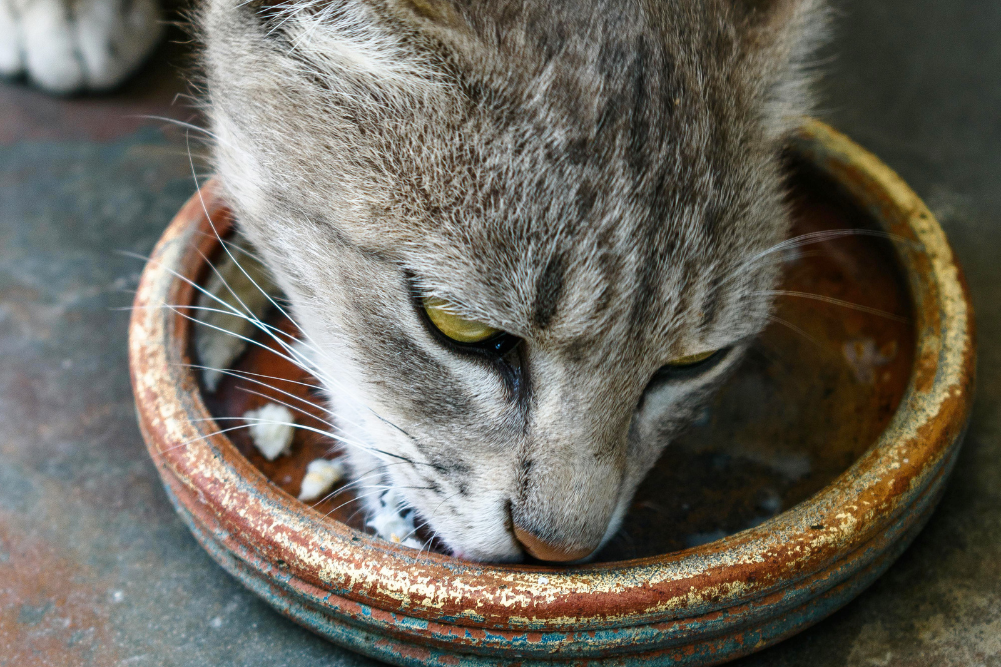Natures Restoration
It’s the buzzword on everyone’s lips. Rewilding is a big new trend in the field of nature conservation that involves restoring degraded ecosystems to their natural state, often via the reintroduction of carefully selected species. Benefits include increased biodiversity, more carbon absorbed and the therapeutic effects for human visitors.
Central to rewilding, according to its early founders, are the “Three Cs”, namely cores (reserves), corridors and carnivores (predators.) Small, fragmented, protected areas are often deliberately connected via wildlife corridors, while long and broad extended corridors of this type are sometimes referred to as “wildways”. One project that has been pursued for decades in piecemeal fashion is the Western Wildway, a stretch of more than 9500km linking Canada, the US and Mexico.
The 30×30 initiative aims to protect 30 per cent of the planet’s land and ocean areas by 2030. This ambitious target was agreed upon at the 2022 COP15 International Biodiversity Conference in Montreal, Canada. To achieve this goal, rewilding strategies have been proposed as a key approach. However, controversy hovers in the background. Indigenous peoples, who protect an estimated 80 per cent of the world’s biodiversity, could face challenges. In worst-case scenarios, such as in parts of India and the Democratic Republic of the Congo, they might be treated as interlopers or poachers. Clearly, much is at stake in how this initiative is implemented.
How rewilding evolved
The concept of rewilding was introduced in 1992 by Dave Foreman, founder of the American direct action environment group Earth First! At the time, his ideas were considered fringe and far-fetched by the mainstream. Decades later, it is remarkable how much recognition they have received.
In the 1990s, conservation biologists Michael Soulé and Reed Noss conducted significant research that advanced the rewilding movement. Soulé, living in the chaparral outside San Diego, observed that bird populations were higher in areas where coyotes were present. He realised that coyotes were deterring domestic cats, a major predator of birds. This insight led to a pivotal moment in his research. In 1998, Soulé and Noss published the paper Rewilding and Biodiversity: Complementary Goals for Continental Conservation, establishing the scientifi c foundation for rewilding and effectively launching the movement.
Three years earlier, a bold trial took place in Yellowstone National Park, Wyoming, USA, demonstrating the positive effects of predator reintroductions. In 1995, eight wolves were reintroduced after a decades-long absence. As a result, elk, a browsing species, began to avoid the valley bottoms and open meadows where they were most at risk from predation. This allowed these areas to regenerate with aspen forests, attracting birds and beavers.
In this century, rewilding has taken shape and matured, with the idea gaining popularity and the number of projects multiplying. The concept of restoring the ecology of degraded areas seems to evoke an atavistic response in interested people. Projects range from vast areas in Patagonia to the Rewild London Fund in the UK, which focuses on small-scale, local initiatives.
Some key concepts
Predators play a major role in rewilded ecosystems, but many have become extinct in historical times due to factors such as farmland expansion, habitat loss and hunting, particularly because they targeted farmed animals. An example from the 20th century is the thylacine or Tasmanian tiger. Apex predators, which are carnivores without natural predators, are especially important in maintaining ecological balance.
Keystone species are animals that exert a strong influence on the ecosystems they inhabit. While some keystone species are apex predators, many are not. The disappearance of a keystone species can lead to the collapse or radical modification of an ecosystem. Some examples include:
- Beavers, which create wetlands that are used by other animals.
- Sea otters off the coast of Alaska. Steady numbers regulate numbers of the sea urchins that they feed on and prevent overgrazing of carbonrich kelp forests.
- Wildebeest on the Serengeti Plain, Tanzania. These animals maintain the savannah landscape, thin out trees and keep grass relatively short, which reduces the frequency and intensity of fires. Their dung enriches the soil and sequesters carbon.
- Starfish occupying rockpools in Makah Bay, Washington State. When removed, as an experiment, this resulted in the loss of all other species except for mussels.
- Flying foxes (large bats) are important for Australian forests because they spread seed, helping these forests to regenerate and supporting a more diverse ecosystem. They also pollinate more than 50 tree species, including eucalypts.
- In New Zealand, the kererū is a native pigeon that disperses the seeds of dozens of native trees and plants. In the case of the karaka, it is now the only native bird that can eat its large berries.
A trophic cascade involves a series of ecological interactions that typically work from the top of the food chain down. This often involves predators reducing the numbers of prey species or at least restricting their movements. The prey, often browsing herbivores, avoid certain areas where they are likely to be attacked by predators. As a result, these zones regenerate, a phenomenon known as an “ecology of fear”.
Species Reintroductions
Where a particular species has disappeared from a country or region, this can leave an ecological niche unfilled. In these instances, it is often highly benefi cial to reintroduce them. In order to establish a breeding population that will expand, sufficient numbers need to be introduced. A reintroduced species, especially in its early stages when numbers are low, will need legal protection and protection of its habitat.
More recent reintroductions have involved species such as beavers, bison, lynx and wolves. One of the movement’s controversies involves the interaction between larger predators and farm animals, especially sheep. Many farmers express an animosity to predators, due to the risk of stock losses, with 12,000 livestock animals in France predated annually by wolves. Multiple countries make compensation payments for farmers’ losses.
A greater diversity of species can positively impact carbon sequestration. In a study of a tropical forest in Guyana, an increase in the number of mammal species from five to 35 was associated with a 4-5 fold increase in tree and soil carbon storage. This effect was stronger than the increase observed when the number of tree species on the same plots rose from 10 to 70, which resulted in a smaller 3.5-4 fold increase in tree and soil carbon. In 2024, a study looked at the herd of 170 bison in the Ţarcu Mountains and found that it could help sequester a quantity of carbon per year equivalent to that emitted by nearly two million cars annually.
Some Regeneration project
In England, initiatives commonly involve links between rewilding and farming on private land. Knepp Castle Estate was the UK’s first large lowland project, launched in 2001 on the full 1400 hectares of a former dairy and arable farm in East Sussex. The property is now highly biodiverse, has a population of introduced beavers, and is home to the first white storks to breed in the UK for hundreds of years. Like Broughton Hall in Yorkshire and Dunsany in Ireland, it follows a pattern of rewilding on land attached to grand houses and ancestral seats.
Gorongosa National Park in Mozambique endured significant setbacks due to a civil war in the latter half of the 20th century. However, today, it serves as a beacon of conservation eff orts, hosting an innovative initiative that introduced buffalo, wildebeest, eland and zebra to the ecosystem. Additionally, the inclusion of hyenas plays a vital role as they scavenge carcasses, thus mitigating the spread of diseases. Another aspect of the project focuses on the reforestation of Mount Gorongosa, a towering peak standing at nearly 2000m high.
Located at the southern tip of Chile, Patagonia National Park spans over 300,000 hectares, encompassing a diverse landscape of grasslands and forests. Established by Conservación Patagónica, a body founded by Kris Tompkins, wife of the late clothing entrepreneur Doug Tompkins, the park merges two former nature reserves and a significant portion of a former ranch. Integral to the management strategy is the removal of extensive fencing, spanning hundreds of kilometres. The park’s ecosystem restoration efforts include the reintroduction of various species such as the rhea (a large flightless bird), Andean condor, guanaco (similar to a llama), huemul deer and puma.
Rewilding in Australia
Australia has a poor species extinction record, with more than 10 per cent of all mammals having gone extinct since the country’s colonisation.
In 2011, 44 Tasmanian devils, a carnivorous marsupial and apex predator, were released outside their island habitat into a 400-hectare wildlife sanctuary in the higher-altitude forested Barrington Tops region of New South Wales. Tasmanian devils were present on the Australian mainland until about 3500 years ago and there are hopes that it will help rebalance the ecology in this sanctuary, which is fenced against the incursion of feral species.
Certain ecologists advocate for the introduction of analogous species to replace extinct ones. For instance, the Megalania, a colossal Australian lizard measuring up to 7m in length, became extinct around 40,000 years ago. Some experts propose the reintroduction of Indonesia’s carnivorous Komodo dragon, which can grow up to 3m long, as a proxy for the Megalania. Komodo dragons have a historical connection to Australia, being thought to have originated there.
Since 2000, work has been underway to create the Gondwana Link, a 1000km bushland corridor in Western Australia connecting the karri forests in the south-west corner of the state close to Perth, to semi-arid woodland and mallee much further east, bordering the arid Nullarbor Plain. This involves encouraging landholders to get on board and adopt restoration practices, with mentoring help.
In New Zeland
New Zealand is remarkable for its lack of large mammals and, prior to the colonial era, the country’s only terrestrial mammals were two bat species. As a result, there is no ecological niche that could be filled by mammalian reintroductions.
Due to this absence of threat, a number of bird species evolved to nest on the ground, including the kākāpō, the world’s largest parrot. Introduced species such as rats, weasels and stoats that eat both eggs and chicks have wreaked havoc on bird populations and effort has gone into curbing numbers of these animals in order to protect native species.
Leave space for nature
A 2021 opinion poll conducted in the UK found 81 per cent support for rewilding and just five per cent opposition. This overwhelming endorsement does not always find itself reflected in the media, especially right-leaning outlets that may portray advocates as too naïve, idealistic or impractical.
Leaving space for nature to exist is made easier if human population increase is curbed, and this applies to reduced housing pressure as well as diminished demand for resources that exacts a price from natural environments. Negative population growth is already happening across much of Eastern Europe and in countries such as Russia and Japan. Some rural parts of Europe, in particular, are seeing a shrinking population, with the children of rural farmers preferring to leave for the cities. This is opening more areas to nature regeneration opportunities.








